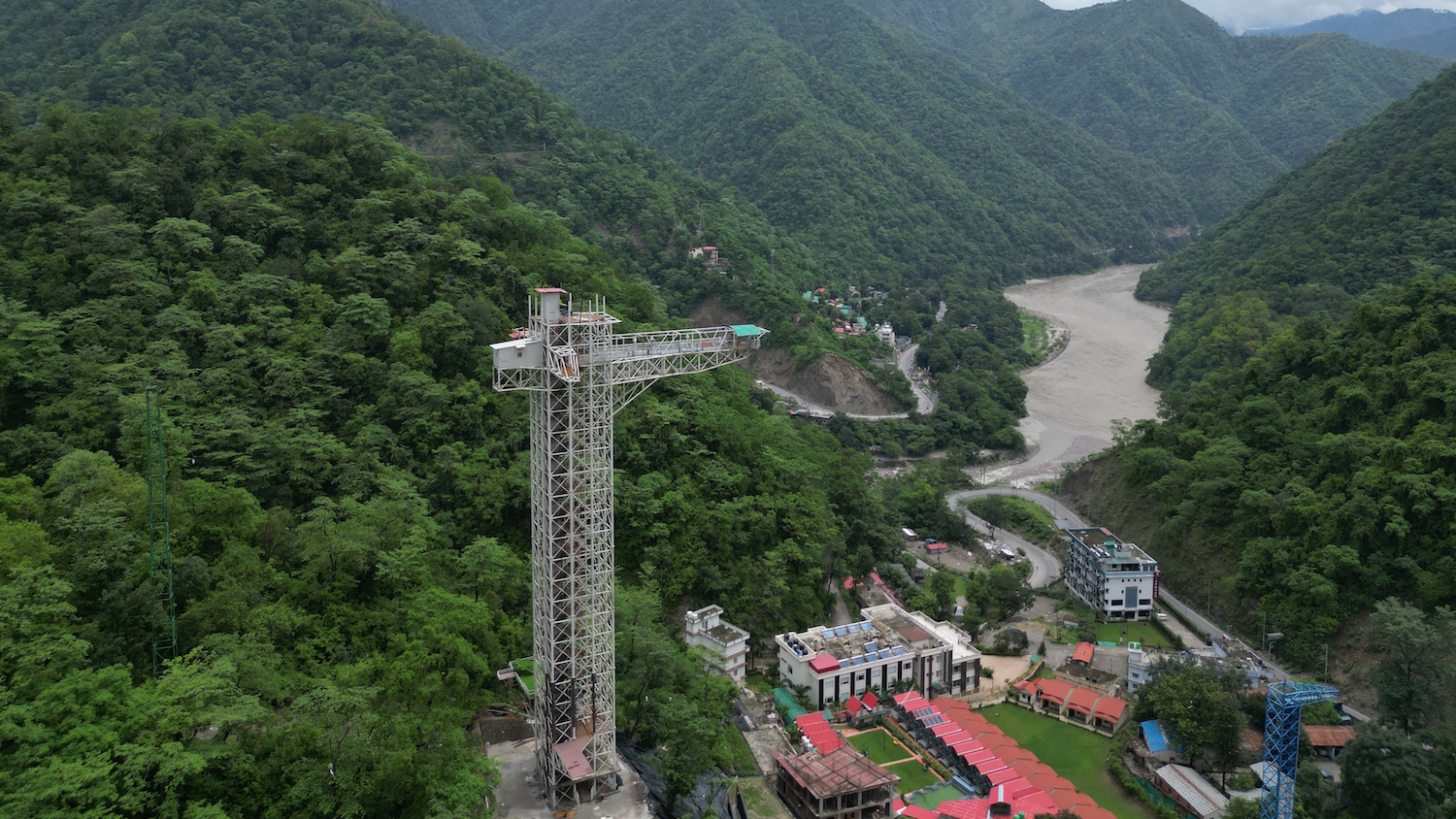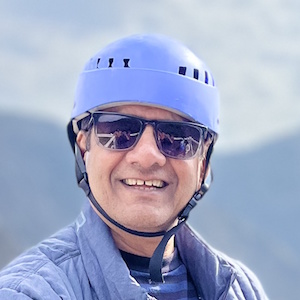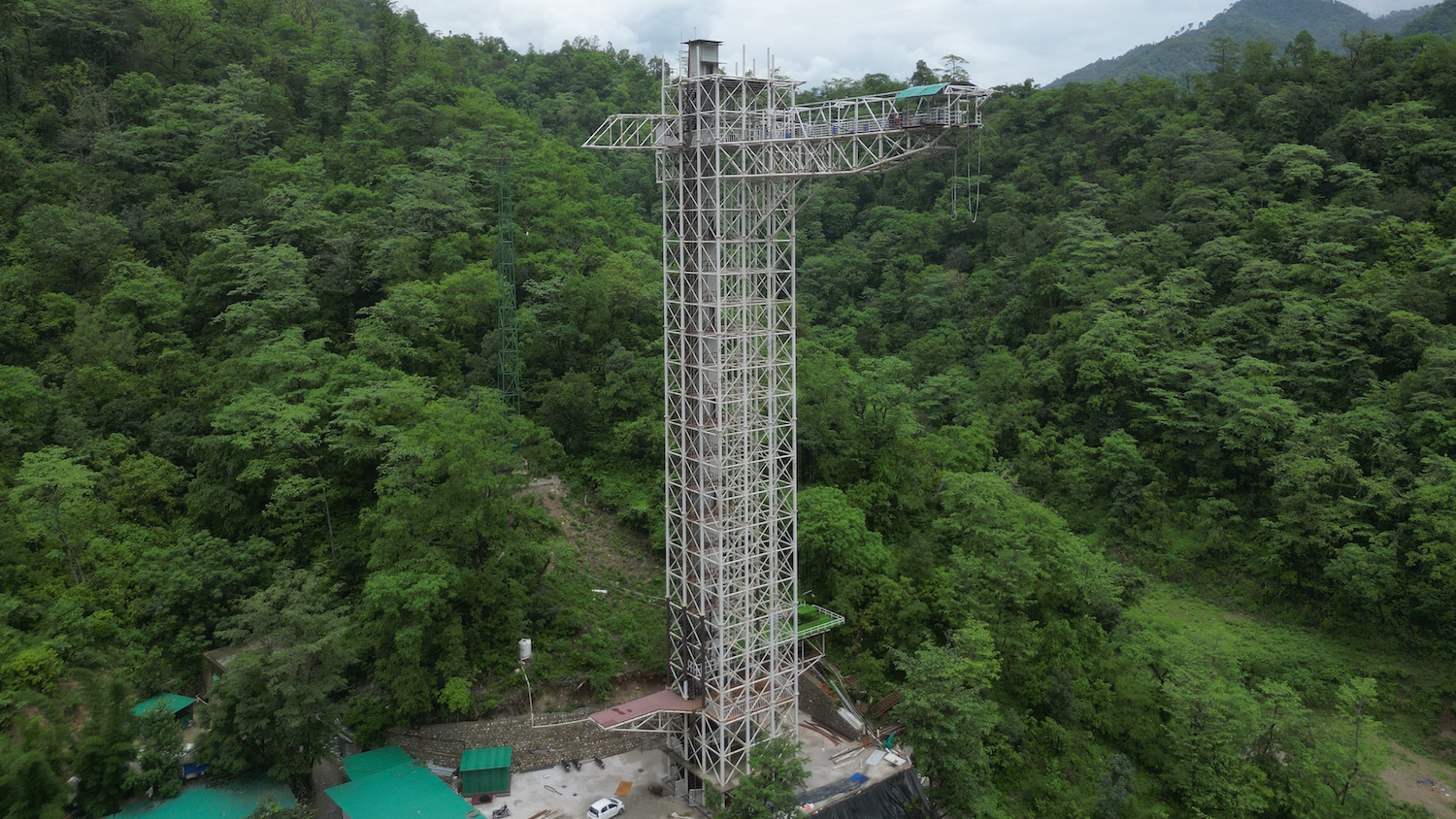
180kph winds, monsoon rain, landslides: designing and building the tallest bungee tower in the Himalayas was just as challenging as jumping off the structure when complete. Jana Miller of Bentley Systems spoke to the engineer that took on both challenges.
Located on the Ganges River’s right bank in the foothills of the Himalayas, the Indian city of Rishikesh is a holy site for Hindus, many of whom pilgrimage to the city. It is also broadly known as the yoga capital of the world and attracts yogis from around the globe for its annual International Yoga Festival.
Alongside these spiritual draws, a growing number of tourists travel to Rishikesh in pursuit of an adrenaline rush. The city holds the title of India’s adventure capital, with various opportunities for white water rafting, zip-lining, and bungee jumping.
Engineers at Noida, India-based Skeleton Consultants set out to make their mark on the city by designing the tallest bungee-jumping tower in India. To eclipse the attraction that formerly held this record – Jumpin’ Heights, also in Rishikesh – the new tower needed to have a drop of at least 83m.
Himalayan Bungy, located within Hikers Adventure Park, blew past this threshold. The tower, which opened to the public last year, sits atop a steep hill with panoramic views of the Ganges. It features a 27m-long boom arm that extends over the slope below, adding the effect of additional height and creating a 107m drop.

“It was a challenge from the foundation design, to the structure, to the fabrication, the erection, everything.”
But designing a stable structure on this site was a tall order.
“We had to be very careful, not only for architectural functionality, but also for the safety of the design,” says Abhay Gupta, director at Skeleton Consultants. “The biggest challenge was with the site conditions.”
Challenging terrain
The park is situated on rocky terrain in an earthquake-prone area, so Gupta’s team had to create a structure that could withstand powerful seismic activity. In addition, strong winds of up to 180kph often sweep through the site.
Gupta’s team created a 3D model using Bentley’s structural analysis software to consider how a tower of this height would be affected by these forces. With insight from this digital analysis, they decided that a lattice structure with cross bracings at key points would best optimise the design for windy conditions.
The team also selected wire ropes to brace the tower’s boom arm to prevent it from twisting in the wind.
To create more stability and prevent landslides on the hill where the tower is located, they planned a retaining wall at the hill’s base and two stone masonry walls along the slope.
Software analysis also revealed that the structure needed to be lighter to eliminate drag, so the tower’s overall weight was cut by nearly 25%, saving five tonnes of steel in the process.

Creative problem solving
Gupta also had to engage in creative problem solving to deliver large parts to the park’s relatively remote location for assembly. Pieces that made up the tower were manufactured at a workshop about 40km away and had to be transported down narrow roads leading to the park. As a result, Gupta had to tweak his design to use smaller pieces, although larger pieces would have been ideal once on site.
Khushbu Davda is the founder of Studio Emergence Mumbai, which was the project architect and provided masterplanning for various other additions to Hikers Adventure Park. He notes that this adjustment was creative and necessary on Gupta’s part.
“It was a matter of how it would be possible to build in an environment like that,” Davda says. “And it was also time sensitive, because when it rains, it pours in Rishikesh.”
Battling the elements
Work on the tower began in early 2022, and the pressure was on to have a stable foundation for the tower in place before monsoon season began in June, bringing with it the risk of landslides.
Even ahead of the rainy season, the project was confronted with difficult conditions. As the tower grew in height, wind became an increasing hindrance, and it grew more dangerous for the crew responsible for tightening each nut and bolt by hand. For a more streamlined and safe process, the team strategically planned the precise order in which each component should be raised and assembled.
Gupta says construction was delayed by around two months due to rain, but the hold-up was offset in part by his team’s choice to lean on digital solutions during the design process. Overall, they saved about 200 hours of work by using 3D visualisation software to optimise the tower’s design before beginning construction.

The bungee experience
While structural integrity was a priority, a comfortable design that would allow jumpers to feel safe was also paramount. Visitors enter a ground-floor lobby and have the option of taking stairs or an elevator to the tower’s main platform, where bungee masters are there to assist jumpers. For people who come to support friends and family planning to jump – or those who decide to back out when faced with the 107m plunge – a viewing lounge is available.
Videos on Himalayan Bungy’s social media accounts show footage of the thrill-seekers who have crossed ‘India’s Tallest Bungy’ off their bucket lists since the tower opened to the public last year. Some confidently somersault off the platform, others lean backward into empty space, and some fling themselves with arms spread wide against the sky like flying squirrels.
Excitement not fear
Regardless of style, these adrenaline junkies might be surprised to know that the team that designed and built the tower considered their work to be a task just as audacious as jumping from the platform itself.
“Right from day one to the finishing day, it was an exciting experience,” Gupta reveals. “It was a challenge from the foundation design, to the structure, to the fabrication, the erection, everything. But in the end, it has come out so well, and people are really enjoying the jump.”
Next up, Gupta plans to take the plunge himself. While many first-time bungee jumpers might feel last-minute panic while staring down from the tower platform, he is not worried.
“I’m not scared because I have full confidence in my structure,” he says. “I’ll be jumping from that platform with great excitement and without giving a second thought.”
Don’t miss out on BIM and digital construction news: sign up to receive the BIMplus newsletter.












